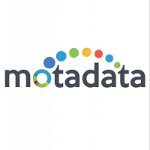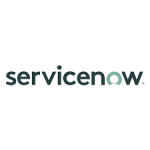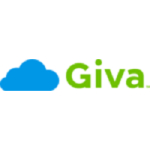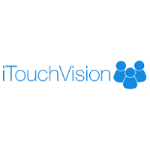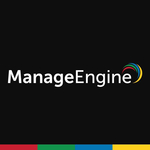List of Best Service Level Agreement Software
Showing 10 of 10 productsManage tasks, invoices, clients, proposals & more!...Read Zodot Reviews
Jira is a project management tool that is trusted by thousands of teams worldwide. With its intuitive interface and customizable features, Jira helps teams of all sizes stay organized, collaborate efficiently, and deliver high-quality results. Whethe...Read Jira Reviews
Brevo is a new software that aims to simplify and streamline various processes within your business. With its user-friendly interface features, Brevo takes productivity to the next level. Its innovative design tools make it a must-have for any organi...Read Brevo Reviews
Freshservice is a popular cloud-based solution for ITSM (IT Service Management) and ITIL Service Desk. It offers a seamless user experience, combined with advanced capabilities for Ticketing and Asset Management. With a customer base of over 20000,...Read Freshservice Reviews
Motadata is more than just a software - it is a IT analytics platform that enables organizations to make data-driven decisions. With a user-friendly interface functionalities, Motadata simplifies complex IT operations and helps improve performance, s...Read Motadata Reviews
ServiceNow ITSM is an innovative and highly efficient solution for managing IT services and processes. Designed to streamline operations and improve the overall efficiency of IT teams, ServiceNow ITSM offers a holistic approach to IT service manageme...Read ServiceNow ITSM Reviews
Giva is a and innovative software solution designed to streamline your business operations and maximize efficiency. With its user-friendly interface features, Giva simplifies complex tasks and enhances productivity. Say goodbye to tedious processes a...Read Giva Reviews
Itouchvision is a software that revolutionizes the way businesses connect with their customers. With its user-friendly interface features, Itouchvision streamlines customer interactions and boosts engagement. Say goodbye to traditional methods and he...Read Itouchvision Reviews
PhaseWare Tracker is a top-rated customer service management software that helps businesses streamline their support processes and enhance customer satisfaction. With powerful features interface, Tracker empowers teams to efficiently track, manage, a...Read PhaseWare Tracker Reviews
ServiceDesk Plus is an AI-driven Unified Service Management platform, built to streamline and automate service delivery operations for both IT and non-IT departments, through visual workflows, predictive and generative AI capabilities, and out-of-the...Read ManageEngine ServiceDesk Plus Reviews
- What Is Service Level Agreement Software?
- Top Reasons Why Businesses Need Service Level Agreement Software?
- What Are the Top Key Features of Service Level Agreement Software?
- What Are the Top Benefits of Service Level Agreement Software?
- What Are the Steps to Choose the Right Service Level Agreement Software?
- What Are the Types of Service Level Agreement Software for Different Industries?
- What Are the Technology Trends for Best Service Level Agreement Software?
- What Are the Deployment Options for Service Level Agreement Software?
What Is Service Level Agreement Software?
A service level agreement (SLA) software platform is used to assist in the definition of service level expectations between a service provider and a client. It usually states the extent of services offered, service performance targets, and how each party will monitor, measure, and manage the services.
Before services are given, both parties should sign and agree on a proper service level agreement software. An SLA may include aspects such as service levels, pricing, limitations, contact information, and compliance requirements. This ensures that both parties have a clear understanding of the relationship's expectations before services are given.
The SLA software can also define metrics for measuring performance, which is especially significant in structured long-term customer/vendor partnerships. SLA software can also help ensure that services are delivered according to the SLA's requirements.
This technology can track service request tickets, service catalog items, incidents, and service level and goal progress. It also provides a mechanism for monitoring how well services are delivered and can provide powerful insights into areas for development.
Overall, the best service level agreement software aids in the definition and management of customer and vendor relationships in a way that satisfies mutual expectations.
Top Reasons Why Businesses Need Service Level Agreement Software?
1. Increased efficiency in handling all parties' service commitments and ensuring consistent client service.
2. Increased contract visibility and contract management.
3. Improved client satisfaction by providing fast and dependable service.
4. Establishing performance benchmarks so that both parties understand the desired level of service quality.
5. Automates and simplifies the process of gathering client feedback and resolving any service-related issues.
6. Enables more accurate forecasting and planning of resource requirements and associated expenses.
7. Establishes a structure of accountability for all parties involved.
8. Enables the establishment of acceptable KPIs for service value versus cost.
9. Ensures service delivery uniformity and uniform response times.
10. Improved inter-party collaboration to ensure service standards are reached and maintained.
11. Reduces paperwork and streamlines processes.
12. Improves the tracking and reporting of service performance.
13. Provides a systematic method for measuring and evaluating supplier performance.
14. Provides a template for developing and negotiating service level agreements rapidly.
15. Enables two distinct parties to readily evaluate and manage contract information.
What Are the Top Key Features of Service Level Agreement Software?
1. Automated Renewals: Your organization's SLA software should allow you to set up automated renewal reminders for current clients, ensuring that SLA obligations do not lapse due to consumer carelessness.
2. Performance Metrics Tracking: Service level agreement software allows you to track performance parameters and ensure they are in line with client expectations.
3. Compliance Reporting: Alerts and reports are automated to ensure users are aware of SLA compliance and breach metrics.
4. Historical Record Keeping: Ensure that all records related to client SLA agreements are backed up and securely preserved in a single repository.
5. Adaptable Database: SLA management software should be safe and configurable, allowing users to optimize operations and create a more effective workflow.
6. Accessibility: For ease of access and use, SLA software should be available on numerous platforms, including mobile and desktop computers.
7. Security: Proactive security should be built into SLA software to keep data secure and out of the hands of unauthorized users.
8. Automated Billing & Invoicing: To ensure that clients are billed according to their set SLA management tool, automated billing and invoicing should be accessible.
What Are the Top Benefits of Service Level Agreement Software?
1. Increased visibility of uptime and availability: SLA software provides a uniform dashboard that enables organizations to monitor the uptime of their services in real time. This gives managers the visibility they need to swiftly and efficiently identify and solve problems.
2. Ability to track and enforce performance expectations: Service level agreement software allows you to set performance objectives, which are tracked and monitored to assure optimal uptime, availability, and service quality.
3. Improved customer experience: SLA management software can assist organizations in better understanding their customers' expectations, allowing them to improve the customer experience. This assists firms in maintaining and increasing consumer loyalty.
4. Reduced customer support costs: The best service level agreement software assists firms in lowering customer support expenses by allowing them to automate customer service. This eliminates the need for firms to manually respond to every consumer query, saving time and money.
5. Automatic SLA compliance: The SLA management tool automates the process of monitoring and enforcing service level agreements, assisting firms in meeting industry standards and regulatory obligations.
6. Improved collaboration across teams: Top service level agreement software allows for the tracking of both internal and external service performance, which can increase collaboration between internal teams and external partners. This helps to guarantee that all stakeholders are working together to achieve the intended quality of service.
What Are the Steps to Choose the Right Service Level Agreement Software?
1. Evaluate Your Needs: First, examine your organization's requirements for using service-level agreement software. Consider the services that your organization will require, as well as the types of service agreements that you will need to manage.
2. Identify Your Budget: Determine how much you can spend on the best service level agreement software. Consider the software's implementation and operational expenses, as well as the pricing structures offered by various providers.
3. Research Software Vendors: Investigate the various software providers on the market that provide service-level agreement software and evaluate their features and capabilities. To gain an unbiased assessment, read reviews from current and previous customers.
4. Compare Software Features: To choose the greatest fit for your organization, compare the features and functionality of each software vendor. Consider cloud support, access control, automation, reporting, and analytics, as well as the software's pricing and scalability.
5. Review Terms & Conditions: Once you've narrowed down your list of potential SLA management software vendors, go over each one's terms and conditions. Consider the vendor's data security policy, customer support, data retention periods, and any other applicable legal requirements.
6. Contact Vendors: Contact the vendors you've shortlisted to ask questions and test the software. Use this opportunity to obtain a sense of customer service and ensure that the program fits all of your needs.
7. Make Your Selection: Make a judgment based on the data from your study, consumer feedback, and your tests. Make certain that the option you select is the best fit for your organization and fits your budgetary and operational requirements.
What Are the Types of Service Level Agreement Software for Different Industries?
1. IT service level agreement software: This software supports IT organisations in meeting contractual service and performance commitments. It can be used from start to end to create, track, and manage IT service commitments.
2. Customer service level agreement software: Customer care teams can use this software for reporting, monitoring, and automation. It is used to assess the effectiveness of customer care representatives and agents, assisting them in meeting service objectives and improving customer satisfaction.
3. Hospitality service level agreement software: This software allows hospitality organisations to manage and track service level agreements with their clients. It is used to track reservations, confirmations, and client interactions, allowing for better customer service and retention.
4. Manufacturing service level agreement software: This software assists manufacturing companies in managing and tracking service level agreements with their clients. It is utilised throughout the organisation to increase operational efficiencies and minimise expenses.
5. Retail service level agreement software: This software aids retailers in organising and tracking service level agreements and customer contacts. It is used to improve customer relationship management, customer service, and client retention rates.
What Are the Technology Trends for Best Service Level Agreement Software?
The technology trends for best service level agreement software are:
1. Automation - Automation is a significant trend. Organizations can increase their efficiency and optimize their service level agreement (SLA) tracking by automating tedious operations. Automation improves the accuracy of SLA maintenance and reporting.
2. Self-service portals - Customers enjoy the simplicity of communicating with businesses through an automated procedure, so self-service portals are becoming increasingly popular. These portals provide consumers with access to documentation, online collaboration tools, and other capabilities that help with SLA management.
3. Support platforms - Platforms for customer care and support are also becoming more common. Customers can use these platforms to provide direct feedback on the quality of service they have received. Such tools enable businesses to monitor SLA compliance in real-time and assess customer satisfaction data.
4. Cloud-based technology - In SLA tracking, cloud-based technology is becoming increasingly prevalent. Organizations can simply and affordably scale up their SLA operations by utilizing cloud-based tools. Cloud-based solutions also provide greater security because all consumer data is safely stored in the cloud.
5. Big data - Big data tools boost organizations' understanding of their service levels and customer experience. Organizations may improve SLA software, customer retention, and profitability by embracing big data analytics.
In conclusion, the greatest top service-level agreement software technology trends focus on automation, self-service portals, support platforms, cloud-based technology, and big data tools, all of which may help organizations track SLA compliance and increase customer satisfaction.
What Are the Deployment Options for Service Level Agreement Software?
When implementing The best service level agreement software, there are a variety of deployment options to consider. These include:
1. On-premise deployment: The software is hosted on the customer's own server in on-premise implementation. This gives the customer more power and customization, but it necessitates the customer handling application maintenance and system operations.
2. Web-based deployment: This entails hosting the software online, which can then be accessed using an interface such as an internet browser. This requires less maintenance on the customer's end, but it also gives the customer less control over customising the software and is often more expensive for longer subscription terms.
3. Software-as-a-Service (SaaS): This deployment technique is similar to web-based deployment, however it is cloud-based rather than online. This allows the user to access the programme from anywhere as long as they have an internet connection, and it decreases the customer's maintenance requirements.
4. Hybrid deployment: This deployment approach combines parts of on-premise and web-based deployments to provide greater customization and control while leveraging the web-based deployment's ease. This is perfect for organisations that demand more control while yet requiring the ease of access associated with web-based deployment.
Each of these SLA software deployment methods has advantages and downsides, and it is critical to analyse your organization's needs before determining which one is ideal for you.




